| Listing 1 - 10 of 119 | << page >> |
Sort by
|
Book
ISBN: 3869459875 9783869459875 395948223X 9783959482233 9783959482233 Year: 2017 Publisher: Nordhausen, [Germany]
Abstract | Keywords | Export | Availability | Bookmark
 Loading...
Loading...Choose an application
- Reference Manager
- EndNote
- RefWorks (Direct export to RefWorks)
Ethnic conflict. --- Conflict, Ethnic --- Ethnic violence --- Inter-ethnic conflict --- Interethnic conflict --- Ethnic relations --- Social conflict
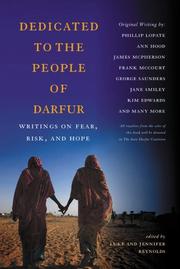

ISBN: 1283587505 9786613899958 0813548349 9780813548340 9780813546179 0813546176 9780813546186 0813546184 Year: 2009 Publisher: New Brunswick, NJ
Abstract | Keywords | Export | Availability | Bookmark
 Loading...
Loading...Choose an application
- Reference Manager
- EndNote
- RefWorks (Direct export to RefWorks)
Life's changes. They happen every day. Some large, some small. A few are very personal. Others impact the world. Dedicated to the People of Darfur: Writings on Fear, Risk, and Hope includes original and inspiring essays that celebrate the glories gained from taking risks, breaking down barriers, and overcoming any obstacles. Nobel and Pulitzer Prize winners, a gallery of O.Henry award recipients, and many best-selling authors come together to share personal and compelling challenges and experiences. From contemplations on past drug use to reflections on gun control, social justice, passion and its sacrifices, and adventures such as skydiving, mountain climbing, and golfing, the topics vary greatly. This kaleidoscopic anthology is a commentary on the lives of prominent literary artists and ordinary citizens who have made simple, yet powerful choices that provoked change in one's self and for humanityùmuch the same way that Luke and Jennifer Reynolds do by building this invaluable collection for readers and the world of human rights. Not too long ago, as struggling graduate students, Luke and Jennifer Reynolds conceived this uniquely themed volume as a way to raise funds to support ending the genocide in Darfur. Some people carry signs, others make speeches, many take action. What is most special about this book is that it extends beyond words and ideas, into a tangible effort to effect change. To this end, all royalties from the sales of Dedicated to the People of Darfur:Writings on Fear, Risk, and Hope will benefit The Save Darfur Coalition, an organization that seeks to end the genocide in Darfur, Sudan.
Ethnic conflict --- Conflict, Ethnic --- Ethnic violence --- Inter-ethnic conflict --- Interethnic conflict --- Ethnic relations --- Social conflict --- Sudan --- History
Book
ISBN: 1501704885 1501707760 9781501707773 1501707779 9781501707766 1501704877 9781501704871 9781501704871 Year: 2017 Publisher: Ithaca, NY : Cornell University Press,
Abstract | Keywords | Export | Availability | Bookmark
 Loading...
Loading...Choose an application
- Reference Manager
- EndNote
- RefWorks (Direct export to RefWorks)
In Killing Others, Matthew Lange explores why humans ruthlessly attack and kill people from other ethnic communities. Drawing on an array of cases from around the world and insight from a variety of disciplines, Lange provides a simple yet powerful explanation that pinpoints the influential role of modernity in the growing global prevalence of ethnic violence over the past two hundred years. He offers evidence that a modern ethnic mind-set is the ultimate and most influential cause of ethnic violence.Throughout most of human history, people perceived and valued small sets of known acquaintances and did not identify with ethnicities. Through education, state policy, and other means, modernity ultimately created broad ethnic consciousnesses that led to emotional prejudice, whereby people focus negative emotions on entire ethnic categories, and ethnic obligation, which pushes people to attack Others for the sake of their ethnicity. Modern social transformations also provided a variety of organizational resources that put these motives into action, thereby allowing ethnic violence to emerge as a modern menace. Yet modernity takes many forms and is not constant, and past trends in ethnic violence are presently transforming. Over the past seventy years, the earliest modernizers have transformed from champions of ethnic violence into leaders of intercommunal peace, and Killing Others offers evidence that the emergence of robust rights-based democracy-in combination with effective states and economic development-weakened the motives and resources that commonly promote ethnic violence.
Ethnic conflict --- Ethnic conflict. --- Conflict, Ethnic --- Ethnic violence --- Inter-ethnic conflict --- Interethnic conflict --- Ethnic relations --- Social conflict --- History.
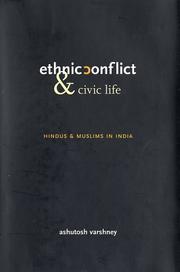
ISBN: 1281729841 9786611729844 0300127944 9780300127942 9781281729842 9780300085303 0300085303 Year: 2002 Publisher: New Haven
Abstract | Keywords | Export | Availability | Bookmark
 Loading...
Loading...Choose an application
- Reference Manager
- EndNote
- RefWorks (Direct export to RefWorks)
What kinds of civic ties between different ethnic communities can contain, or even prevent, ethnic violence? This book draws on new research on Hindu-Muslim conflict in India to address this important question. Ashutosh Varshney examines three pairs of Indian cities-one city in each pair with a history of communal violence, the other with a history of relative communal harmony-to discern why violence between Hindus and Muslims occurs in some situations but not others. His findings will be of strong interest to scholars, politicians, and policymakers of South Asia, but the implications of his study have theoretical and practical relevance for a broad range of multiethnic societies in other areas of the world as well. The book focuses on the networks of civic engagement that bring Hindu and Muslim urban communities together. Strong associational forms of civic engagement, such as integrated business organizations, trade unions, political parties, and professional associations, are able to control outbreaks of ethnic violence, Varshney shows. Vigorous and communally integrated associational life can serve as an agent of peace by restraining those, including powerful politicians, who would polarize Hindus and Muslims along communal lines.
Communalism --- Ethnic conflict --- Hindus --- Muslims --- Muslims in India --- Conflict, Ethnic --- Ethnic violence --- Inter-ethnic conflict --- Interethnic conflict --- Ethnic relations --- Social conflict --- India --- Politics and government
Book
ISBN: 1617352470 9781617352478 9781607522423 160752242X 9781607522430 1607522438 Year: 2009 Publisher: Charlotte, NC IAP/Information Age Pub.
Abstract | Keywords | Export | Availability | Bookmark
 Loading...
Loading...Choose an application
- Reference Manager
- EndNote
- RefWorks (Direct export to RefWorks)
Multicultural education --- Ethnic conflict --- Conflict management --- School management and organization --- Conflict, Ethnic --- Ethnic violence --- Inter-ethnic conflict --- Interethnic conflict --- Ethnic relations --- Social conflict
Book
ISBN: 900427636X 9789004276369 9789004276352 9004276351 1322515107 Year: 2015 Publisher: Leiden, Netherlands : Brill,
Abstract | Keywords | Export | Availability | Bookmark
 Loading...
Loading...Choose an application
- Reference Manager
- EndNote
- RefWorks (Direct export to RefWorks)
Conflict and Peace in Central Eurasia combines theory with in-depth description and systematic analyses of ethnoterritorial conflict and coexistence in Central Eurasia. Central Eurasia is at the heart of the Eurasian continent around the Caspian Sea. Much of this macro-region is made up of the post-Soviet republics in Central Asia and the Caucasus, but it also covers other areas, such as parts of Russia and Iran. Central Eurasia is subject to a number of ethnoterritorial conflicts. Yet at the same time, a large number of ethnic groups, speaking different languages and following different religions, coexist peacefully in this macro-region. Babak Rezvani explains ethno-territorial conflicts not only by focusing on these conflicts but also by comparing all cases of conflict and coexistence in (post-)Soviet Central Asia, the Caucasus and Fereydan, the so-called Iranian little Caucasus. Aiming at formulating new theories, this book makes use of qualitative comparative analysis (QCA), as well as case studies and statistical analyses. It provides an innovative and interesting contribution to Eurasian Studies and Conflict Analysis, and at the same time demonstrates a detailed knowledge of the relevant literature. Based on thorough research, the study offers a deep and insightful history of the areas and conflicts concerned.
Ethnic conflict --- Conflict, Ethnic --- Ethnic violence --- Inter-ethnic conflict --- Interethnic conflict --- Ethnic relations --- Social conflict --- Eurasia --- Asia --- Europe --- Ethnic relations. --- Conflits ethniques --- Eurasie --- Relations interethniques
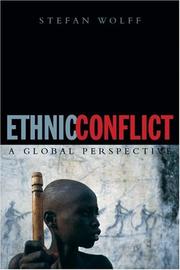
ISBN: 0192805878 0192805886 1423767721 0191539589 1280762853 1423767721 9780191539589 9781423767725 9781280762857 1383002835 Year: 2023 Publisher: Oxford : Oxford University Press,
Abstract | Keywords | Export | Availability | Bookmark
 Loading...
Loading...Choose an application
- Reference Manager
- EndNote
- RefWorks (Direct export to RefWorks)
Across the world, violent ethnic conflicts continue to destabilise entire regions, hamper development and cause unimaginable human suffering. The author investigates the origins, dynamics, management and settlement of these conflicts.
Ethnic conflict --- Ethnic relations --- Political aspects --- Ethnic conflict. --- Ethnic politics --- Conflict, Ethnic --- Ethnic violence --- Inter-ethnic conflict --- Interethnic conflict --- Social conflict --- Political aspects.
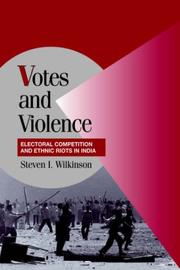
ISBN: 052182916X 0511211724 9780511211720 9780521829168 0511217099 9780511217098 0511215304 9780511215308 9780511510458 0511510454 0521536057 1107147727 9781107147720 1280540524 9781280540523 0511327315 9780511327315 0511213492 9780511213496 9780521536059 0521536057 Year: 2004 Publisher: Cambridge New York Cambridge University Press
Abstract | Keywords | Export | Availability | Bookmark
 Loading...
Loading...Choose an application
- Reference Manager
- EndNote
- RefWorks (Direct export to RefWorks)
Why do ethnic riots break out when and where they do? Why do some governments try to prevent ethnic riots while others do nothing or even participate in the violence? In this book, Steven I. Wilkinson uses collected data on Hindu-Muslim riots, socio-economic factors and competitive politics in India to test his theory that riots are fomented in order to win elections and that governments decide whether to stop them or not based on the likely electoral cost of doing so. He finds that electoral factors account for most of the state-level variation in Hindu-Muslim riots: explaining for example why riots took place in Gujarat in 2002 but not in many other states where militants tried to foment violence. The general electoral theory he develops for India is extended to Ireland, Malaysia and Romania as Wilkinson shows that similar political factors motivate ethnic violence in many different countries.
Elections --- Political violence --- Ethnic conflict --- Conflict, Ethnic --- Ethnic violence --- Inter-ethnic conflict --- Interethnic conflict --- Ethnic relations --- Social conflict --- Violence --- Political crimes and offenses --- Terrorism --- Social Sciences --- Political Science --- Elections - India --- Political violence - India --- Ethnic conflict - India
Book
ISBN: 1283949636 0253006392 9780253006394 9780253006318 0253006317 9780253006356 025300635X Year: 2013 Publisher: Bloomington : Indiana University Press,
Abstract | Keywords | Export | Availability | Bookmark
 Loading...
Loading...Choose an application
- Reference Manager
- EndNote
- RefWorks (Direct export to RefWorks)
Shatterzone of Empires is a comprehensive analysis of interethnic relations, coexistence, and violence in Europe's eastern borderlands over the past two centuries. In this vast territory, extending from the Baltic to the Black Sea, four major empires with ethnically and religiously diverse populations encountered each other along often changing and contested borders. Examining this geographically widespread, multicultural region at several levels-local, national, transnational, and empire-and through multiple approaches-social, cultural, political, and economic-this volume offers informed a
Borderlands --- Ethnic conflict --- Border-lands --- Border regions --- Frontiers --- Boundaries --- Conflict, Ethnic --- Ethnic violence --- Inter-ethnic conflict --- Interethnic conflict --- Ethnic relations --- Social conflict --- History --- Europe, Eastern --- East Europe --- Eastern Europe --- Boundaries.
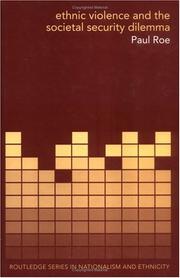
ISBN: 1134276893 1280114983 0203005449 9780203005446 0415347874 9780415347877 9781134276844 9781134276882 9781134276899 9781138811638 Year: 2005 Publisher: London New York Routledge
Abstract | Keywords | Export | Availability | Bookmark
 Loading...
Loading...Choose an application
- Reference Manager
- EndNote
- RefWorks (Direct export to RefWorks)
Ethnic Violence and the Societal Security Dilemma explores how the phenomenon of ethnic violence can be understood as a form of security dilemma by shifting the focus of the concept away from its traditional concern with state sovereignty to that of identity instead. The book includes case studies on:* ethnic violence between Serbs and Croats in the Krajina region of Croatia, August 1990* ethnic violence between Hungarian and Romanians in the Transylvania region of Romania, March 1990.
Political violence --- Ethnic conflict --- Security, International. --- Conflict, Ethnic --- Ethnic violence --- Inter-ethnic conflict --- Interethnic conflict --- Ethnic relations --- Social conflict --- Violence --- Political crimes and offenses --- Terrorism --- Collective security --- International security --- International relations --- Disarmament --- International organization --- Peace
| Listing 1 - 10 of 119 | << page >> |
Sort by
|

 Search
Search Feedback
Feedback About UniCat
About UniCat  Help
Help News
News